Ancient City of Troy | Explore Troy Ruins in Turkey
We all know of the Trojan War, the heroic tales, and the infamous Trojan Horse, but did you know that Troy is more than just a mythical backdrop?
It exists in reality, waiting to be explored. Yes, you read that right - you can actually visit Troy and witness the remnants of this legendary city firsthand.
Located in modern-day Turkey, the city of Troy ruins have captured the imaginations of scholars and adventurers alike for centuries.
Its roots trace back to the 3rd millennium BC when the Hittites founded it. According to Homer's epic poems, the "Iliad" and the "Odyssey," Troy was the epicenter of a decade-long conflict between the Trojans and the Achaeans that shaped the ancient world. A cunning ruse involving a wooden horse led to the downfall of the seemingly impregnable city. While some may debate the authenticity of the Trojan War, historical evidence suggests that a conflict indeed occurred around the 12th century, transforming the Hittite name Wilusa into Illion and eventually Troia. But is the Troy of myth the same as the archaeological site of Hisarlik?
The ruins of ancient Troy in Hisarlik entered the UNESCO World Heritage List in 1998. Today, visitors can explore the ruins of this ancient city and gain a deeper appreciation for its rich history and cultural heritage.
Join us as we navigate Troy’s fascinating history, unearth some archaeological evidence authenticating the story, and explore the fascinating remnants of this ancient city.
History of Troy
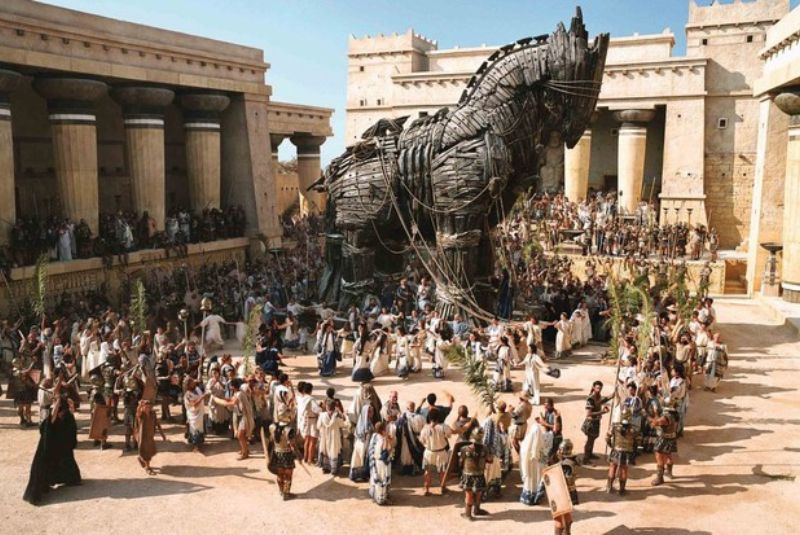
The ancient city of Troy has long been the subject of fascination and intrigue, thanks to the epic tale recounted in Homer's Iliad. According to the story, the Trojan War was fought for ten years as the Greeks sought to reclaim Helen, the Queen of Sparta, who had been taken by Prince Paris of Troy.
For a long time, people have wondered whether Troy is just a legend or whether it has a basis in reality. The search for the ruins of Troy began in earnest in the 19th century, and in 1870, Heinrich Schliemann made a significant discovery in northwest Turkey. Beneath a massive mound, known as Hisarlık in modern Turkish, Schliemann found the remains of a Bronze Age city. Excitedly, he believed he had unearthed the gold treasures of Priam, the King of Troy, but subsequent research proved otherwise. The treasure ended up in Russia and remains there today.
The location and characteristics of the excavated ruins strongly align with Homer's description of Troy. The city features imposing defensive walls, a wide main street, and a gate large enough for two chariots to pass through side by side. However, at first, the size of the citadel seemed too small to match the scale of the legendary city. It was not until archaeologists from the University of Pennsylvania explored beyond the main walls that they discovered evidence of a lower residential area, indicating a larger population. With a total area of 75 acres, the city could have accommodated up to 10,000 inhabitants, aligning with historical accounts.
Furthermore, the layers of civilization found at the site provide a chronological sequence dating back to 3000 BC. The layer corresponding to the time of the Trojan War, Layer Six, dates to around 1250 BC, matching the period described by Homer. This age alignment further supports the identification of the site as Troy.
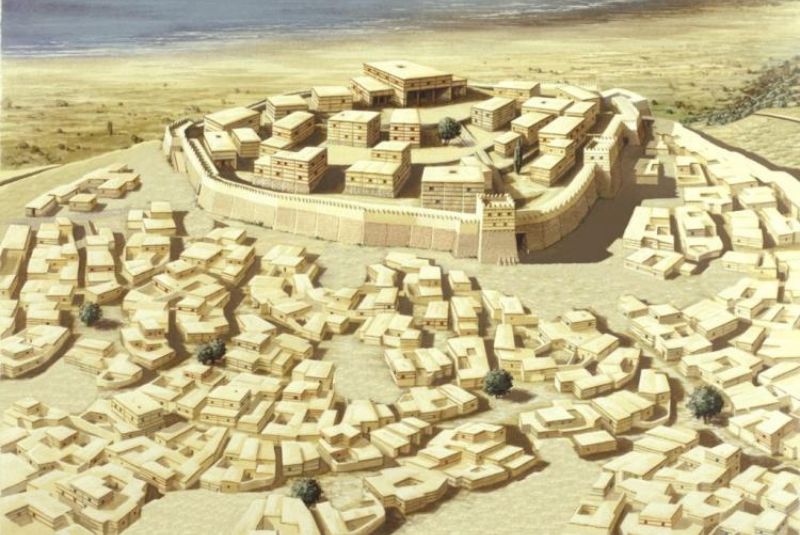
Troy's location also matches Homer's descriptions. It is situated on the Turkish Aegean coast, near the Dardanelles Strait, facing Greece. The nearby island of Tenedos, where the Greeks hid during their ruse of sailing away, and Mount Ida, where the gods observed the war, further contribute to the site's alignment with the story.
Archaeological findings also provide evidence of past conflicts and besiegement. The city's defensive walls, fortified gateposts, and the presence of slingshot pellets, bronze arrowheads, and spearheads indicate a history of warfare.
While the exact details of the Trojan War may differ from the epic poem, the archaeological evidence strongly suggests that a conflict did occur, providing the inspiration for Homer's tale.
Troy was destroyed and rebuilt several times throughout its history. The first destruction occurred around 1250 BC when Mycenaean Greeks attacked it. It was later rebuilt and became a prosperous city under Roman rule. However, it was destroyed again during an earthquake in 500 AD.
Today, visitors can explore the ruins of Troy, immersing themselves in this ancient city's captivating history and mythology. The site showcases the remnants of the defensive walls, gates, and other structures, allowing visitors to walk in the footsteps of the city's inhabitants. Additionally, a replica of the famous Trojan Horse serves as a reminder of the war's cunning stratagem.
Things to See in Troy
When exploring the ancient city of Troy, there are several captivating things to see.
Trojan Horse Model
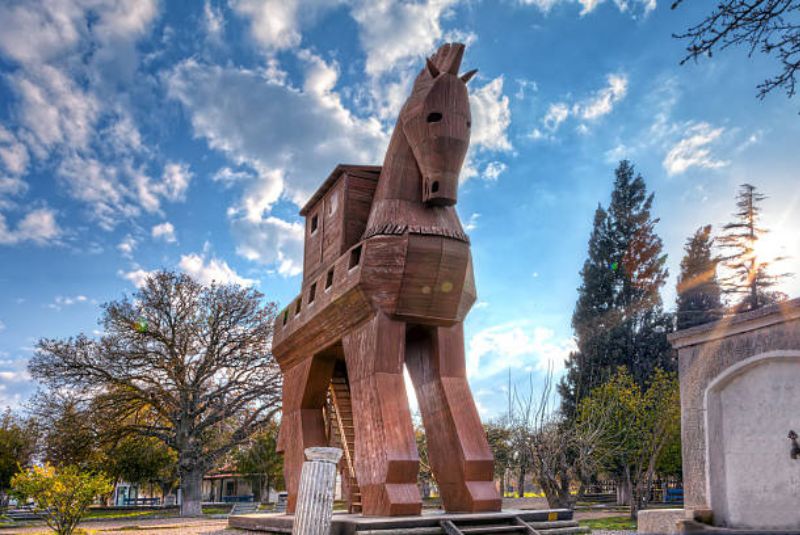
As you enter through the main gates, you'll be greeted by imposing visitor gates, a small shop, and a café. Just behind them stands a large model of the iconic Trojan Horse, offering a whimsical interpretation of what the legendary horse might have looked like. While not historically accurate, it provides a fun experience, especially for families with children.
The Walls of Troy
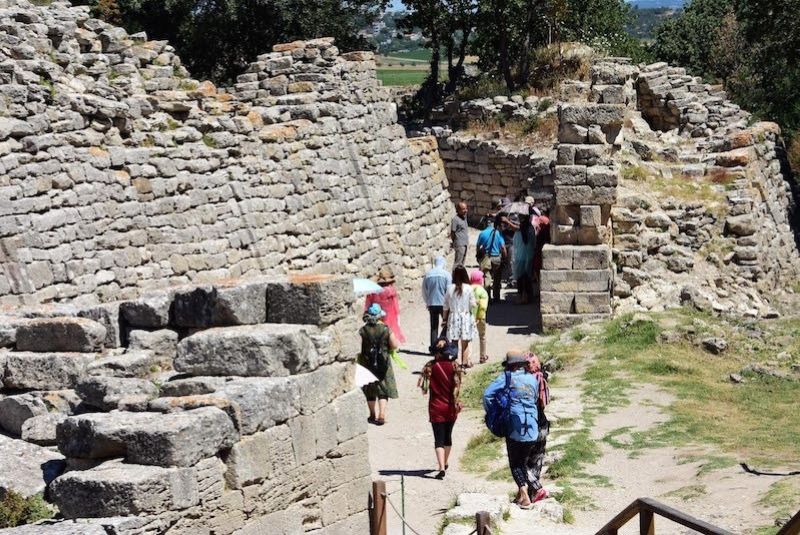
The Walls of Troy are one of the fascinating attractions in Troy. These ancient walls were built around 3000 BC and were a vital defense mechanism for the city. They were destroyed and rebuilt several times over the centuries. You can walk along these walls and envision Trojan defenders peering out from the citadel, observing the Greek army camped on the plain below.
While walking, you may initially find yourself a bit disoriented. Even after extensive research, distinguishing the different city layers and historical periods can be challenging. However, you can still appreciate the grandeur of Troy's walls, the south gate, and the towering eight-meter-high northeast bastion.
Layers of Troy

Troy's complexity arises from its multiple layers, with nine distinct cities built on top of one another. Troy I dates back to approximately 3000 BC, while Troy II, excavated by Schliemann, stems from around 2500 BC. Of particular interest is Troy VI, the Troy of Homer's epic tale, which emerged during the Late Bronze Age (1700–1180 BC). The final phase of occupation occurred under the Romans until around 500 AD. Certain points along the circuit clearly mark these layers, providing insights into the city's repeated redevelopment over the centuries.
Troy Museum
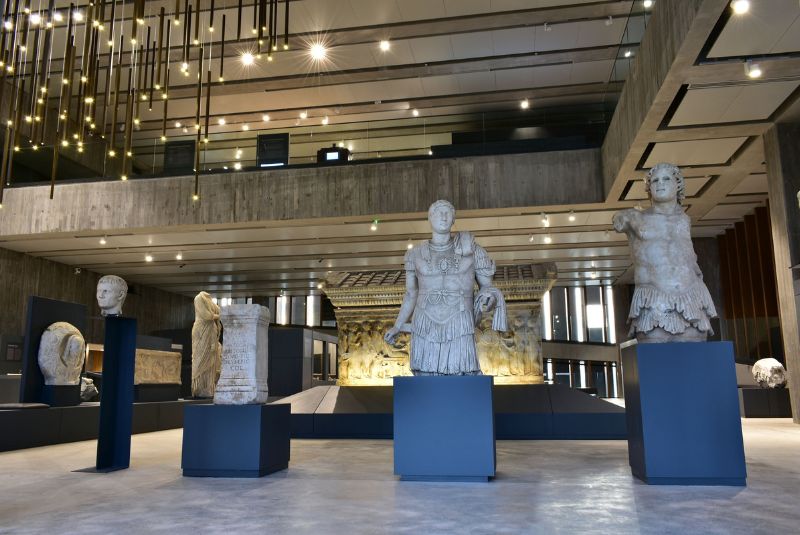
Located 800 meters from the archaeological site in Tevfikiye village, the Troy Museum opened its doors in 2018. This modern and intelligently designed building houses a captivating collection of archaeological treasures spanning the city's 4,000-year history, along with artifacts from nearby sites.
Other Places to Visit Near the Ancient City of Troy
When visiting the ancient city of Troy, there are also other fascinating places to explore in the surrounding area. Here are a few noteworthy destinations:
Trojan Horse Statue in Çanakkale

Following the filming of the epic movie "Troy," the wooden horse used in the production was generously donated to the city of Çanakkale. Today, you can find this impressive statue standing on the waterfront. No visit to Troy would be complete without snapping a photo in front of this iconic piece of movie memorabilia. If you're staying in Çanakkale, it's convenient to arrange a day trip to Troy from here.
Viewpoint Near Kepez in Çanakkale
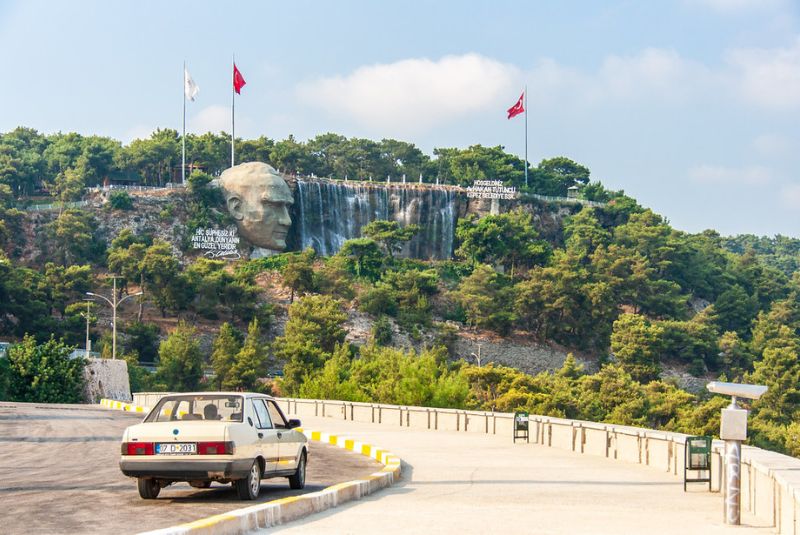
As you drive south from Çanakkale towards Troy, you'll pass through the town of Kepez. About 3 miles outside the town, you'll come across a parking area on the right-hand side of the hill. From here, you can enjoy a breathtaking viewpoint overlooking the Dardanelles, the narrow strait connecting the Aegean to the Black Sea. This strait holds historical significance as a trade route during Homer's time, and it is believed that Troy served as a crucial gateway city for ships to restock and repair while waiting for favorable winds to traverse the strait.
Mount Ida

Don't miss the opportunity to visit Mount Ida, which served as the inspiration for the mythical story of the gods observing the battles below. This majestic mountain offers breathtaking views and a chance to immerse yourself in the ancient legends that surround Troy.
Bozcaada
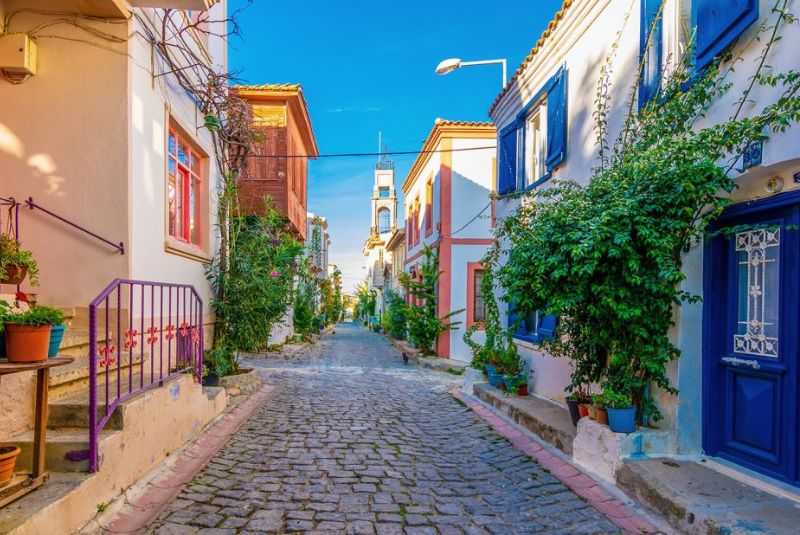
Make a stop at the picturesque Aegean island of Bozcaada, known for its charming old town and historic castle. Besides its rich history, the island is renowned for its delectable seafood and locally produced wines. To reach Bozcaada, take a ferry from Geyikli Harbour, conveniently located approximately 10 kilometers from Troy.
Gallipoli Memorial
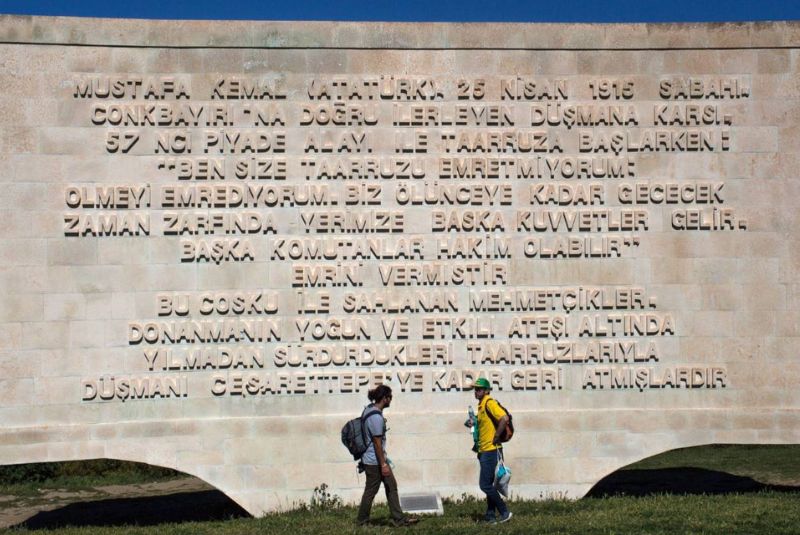
History enthusiasts, particularly those interested in World War I, will be familiar with the Gallipoli campaign. In 1915, the Allies, including many Australians and New Zealanders, landed on the Gallipoli peninsula but were ultimately defeated, resulting in approximately 250,000 casualties on each side. Today, a memorial stands on the north side of the Dardanelles Strait, offering a solemn tribute to the fallen soldiers. Visitors can also explore the landing beaches, battle sites, and cemeteries dedicated to the Allied soldiers. This area holds significant historical importance and is a top destination in Turkey for 20th-century history enthusiasts.
Where is Troy in Turkey Map?
The ruins of Troy location is along the picturesque Turkish Aegean coast, around 3 miles from the southern entrance of the Dardanelles Strait. It's conveniently located near the charming village of Tevfikiye and a short 20-mile drive from the city of Çanakkale. The site is known as Hisarlık in Turkish. You can find the location on the map below.
How to Get to Ruins of Troy in Turkey

To reach the ancient city of Troy, the closest major city is Çanakkale, which offers convenient access through its airport with direct flights from Istanbul. From Çanakkale, you'll embark on a pleasant journey of approximately 30 kilometers (about 45 minutes) to reach Troy. The most common mode of transportation is by minibus, readily available at the local bus station. Minibuses typically operate on an hourly schedule starting from 7 am, but it's advisable to conduct some research to confirm the departure times, as they often wait until they have enough passengers. For a seamless experience, it's recommended to book accommodation in Çanakkale since Troy is typically explored as a day trip and does not provide any lodging options.
Best Time to Visit the Ruins of Troy
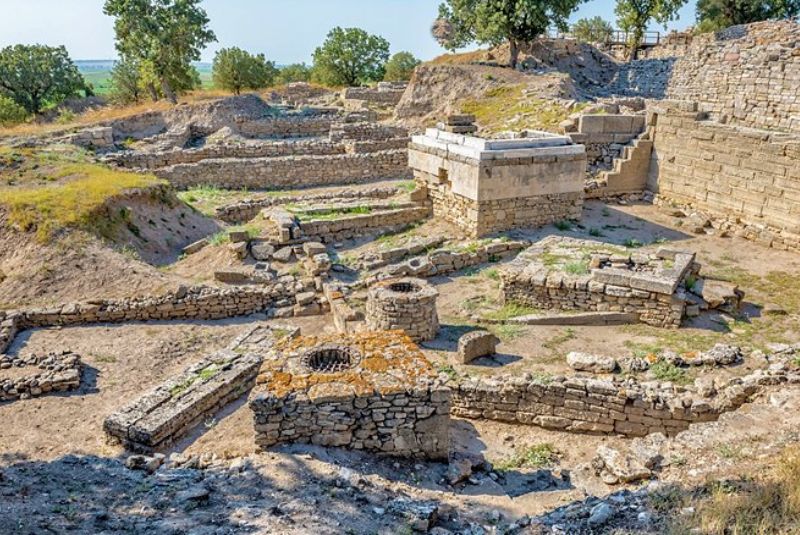
To have the best experience exploring the ruins of Troy, it's advisable to plan your visit strategically. Most large tour groups tend to arrive in the morning when the site opens, staying for about 1-2 hours before moving on. To avoid the crowds, it's recommended to avoid arriving early.
Instead, consider aiming for a late morning visit or, during the summer months, opt for the end of the day when the crowds have dispersed and the lighting is pleasant. Alternatively, visiting during the winter season offers the advantage of avoiding crowds entirely.
Is Troy Turkey Worth Visiting?

There are several compelling reasons to consider visiting Troy in Turkey, particularly for those intrigued by Greek literature and mythology. It holds a significant place in history and is renowned as one of the most famous archaeological sites globally.
In addition, if you have a strong interest in archaeology or Greek mythology, planning a dedicated trip solely to visit Troy is well worth planning. Even if you don't have an interest in Greek mythology, if you happen to be passing through the area, it is worth stopping by for an hour or two to appreciate the historical significance of this legendary site.
Bottom Line
The ancient city of Troy continues to captivate the imagination with its rich history and legendary tales. With origins dating back to the Hittites in the 3rd millennium BC, Troy gained fame through Homer's epic poems.
Today, the ruins of ancient Troy, designated as a UNESCO World Heritage site, await exploration. Visitors can walk amidst the ruins, explore the defensive walls, and encounter the replica Trojan Horse, allowing them to connect with the ancient world and unravel the mysteries of this iconic city.
Share your story!
Comment below and let us know about your Experience.
Your story inspires others!
Comment
Leave a Comment